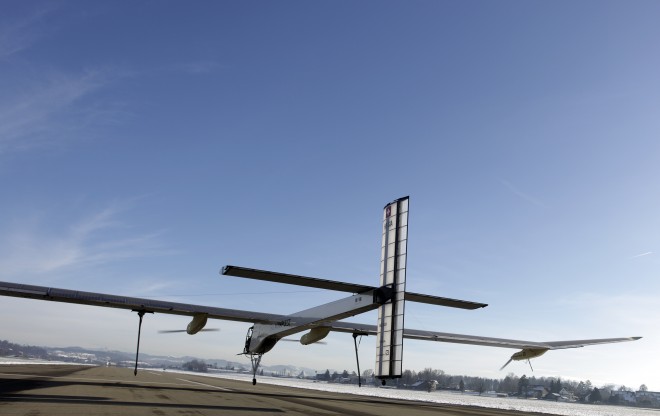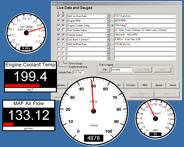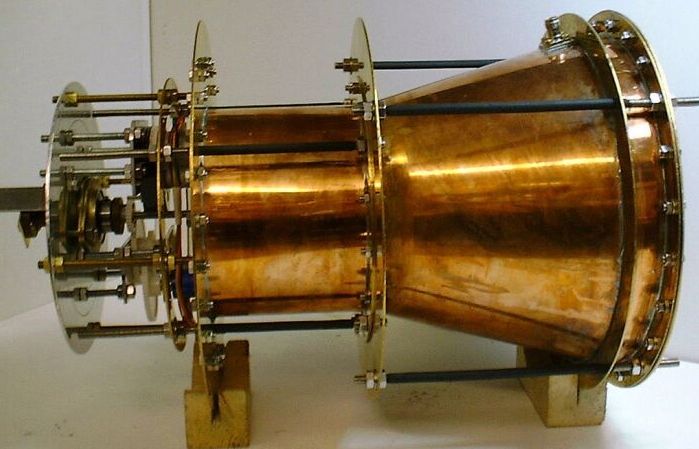The solar impulse is a completely solar powered aeroplane. The flight was a short one – 350m at an elevation of 1m, but it proved the concept!

Solar Impulse Completes First Flight | Autopia | Wired.com.

The solar impulse is a completely solar powered aeroplane. The flight was a short one – 350m at an elevation of 1m, but it proved the concept!

Solar Impulse Completes First Flight | Autopia | Wired.com.
Using electromagnetic pulses, researchers have found a way to impact steel at around 3500 bar allowing holes to be cut in hard steel in 200ms, around 7 times faster than a laser can.
Electromagnetic fields as cutting tools.
This site has huge archives of declassified aerial reconnaissance photographs from the second world war.
The National Collection of Aerial Photography.
Royal Caribbean’s Oasis of the Seas, unveiled in Fort Lauderdale, is nearly 50% larger than the largest cruise ships now at sea. But it’s not just the ship’s size that has people talking. Built at a record cost of $1.4 billion, the 225,282-ton vessel is chock-full of industry firsts housed within seven themed neighborhoods. The 6,296-passenger vessel’s first cruise with paying passengers is set for Dec. 1
This makes it 5 times larger than the Titanic – and in the current economic climate, they’ll have problems filling it up, as well as fitting it into ports: currently only four can take it, but other ports are expanding their facilities and there should be more ports next year.
via Oasis of the Seas sets sail – USATODAY.com.
Looking for a private plane to fly? These guys buy up old aircraft, refit them with modern avionics packages and a big engine, allowing you to buy a tip top modern plane capable of doing over 200KTS IAS for a fraction of the new price.
Next Dimension Aircraft – Previously Owned Aircraft.
Any car built this century has an OBDII interface. This allows mechanics to plug in their laptop and get real time engine data. Lots of information about the running of the car. Nowadays there are quite a few USB / Bluetooth OBD-II connectors, which allow streaming of this data to your laptop, Garmin navigation system or iPod / iPhone.
PLX Devices Inc. sells the PLX Logger Software, as well as devices to show the data on.


ODBCOM has software going for only $85,-

Scantool sells software as well as displays. The software goes for $120,-

Its dashcommand software ($40) allows you to create custom skins and settings for your own digital dashboard

Auterra has the DynoScan Windows software going – including a google earth interace

It also sells a display unit

Then there’s PCMScan by Palmer

All these tools have different featuresets and support different cars…
This is an electric car that charges fully in 1/2 an hour to go 187 miiles and goes up to 60 mph under 4 seconds.

Eat that, Tesla!
e-WOLF e2 seeks to electrify, succeeds.
What if we could turn all the plastic waste we create on a daily basis into fuel to power our cars? A Washington, DC-based company called Envion claims it can do just that with a process that turns plastic into an oil-like fuel for just $10 per barrel. According to Envion, the resulting fuel can be blended with other components and used as either gasoline or diesel.
via Inhabitat » New Envion Facility Turns Plastic Waste into $10/Barrel Fuel.
This, the production version of the Mission One Electric Superbike managed to do 150 mph average over at Bonneville over two runs of 1 mile. It has a range of 150 miles on a charge.
Massachusets, USA, is doing something that should have been done a long time ago: Car manufacturers are computerising their cars to a greater and greater degree. This is great – more power, more control, more safety, more fun.
Unfortunately, the software and interfaces for these computers are closed – repairmen are not given access to manuals or other information that allows them to manipulate the computer. Thus they have serious trouble making repairs that they should be able to make easily.
Massachusets is sponsoring a bill that forces the car manufacturers to give over all the information necessary to make repairs on cars to whoever wants them; independent garages, or just you.
That’s 225 kph – and a ridiculous speed for something that’s basically an uprated tea kettle on wheels!
Steam Car Breaks World Speed Record at 140mph – World’s Fastest Kettle – Gizmodo.
For $8000 you can launch your own satellite into low earth orbit at 310 km. It’ll stay up there for around 3 weeks untill it burns up in reentry. They come in kit form and you can stuff whatever you want in there as long as it weighs less than 0.75 kg and fits into the tube they send you. You can double, triple or quadruple the tubesat, allowing you to launch greater payloads. They will be launched on Interobital’s Neptune rocket, which carries 32 tubesats per time. They expect to launch 1 rocket per month from 2010 from the IOS Spaceport Tonga.

They’re expecting it to go in 2010. Let’s hope this becomes a reality!
The Second Solar spaceship, designed by Different Futures and constructed for the Sensapolis fun park earlier this year, is a three-level, 850 sq m interactive replica of a real shuttle, albeit one better suited to exploration of the cognitive rather than the galactic variety.
The interior of the installation, which includes a 3-D cinema, a laboratory, a warp-core, a medical centre and an alien breeding ground, was designed by Clostermann Design in conjunction with Kohlbecker Architekten.
Total awesomeness.



Satellite Propulsion Research Ltd (SPR Ltd) a small UK based company, has demonstrated a remarkable new space propulsion technology. The company has sucessfully tested both an experimental thruster and a demonstrator engine which use patented microwave technology to convert electrical energy directly into thrust. No propellant is used in the conversion process. Thrust is produced by the amplification of the radiation pressure of an electromagnetic wave propagated through a resonant waveguide assembly.


While most crazy fast concept cars use aerodynamics to keep the wheels firmly planted on the ground, designer Iman Maghsoudi has taken the opposite tack with his wild Ferrari Monza concept. Once you reach a predetermined speed, an onboard computer changes the car’s aerodynamic profile, using winglets called canards ahead of the front wheels to create lift which reduces friction. In most cases, the resulting vehicle would be called an airplane, but with the Monza, ground effects come into play to keep it on terra firma.
I’ll admit that I’m no aerodynamic engineer, but this all sounds a little far fetched. Still, you’ve got to admit that it looks amazing.